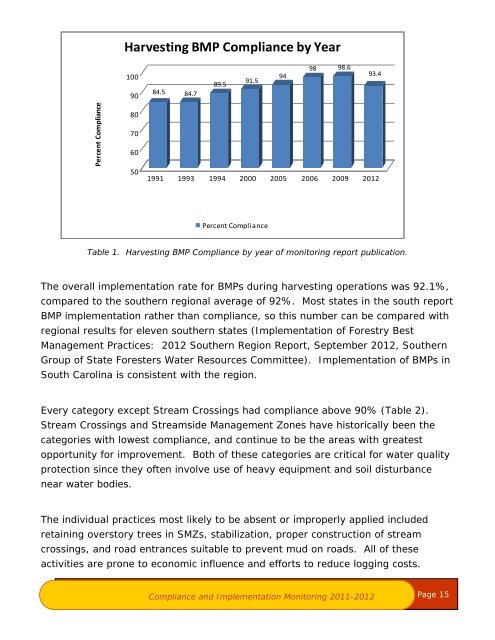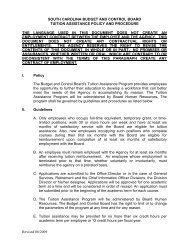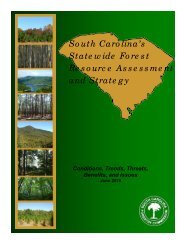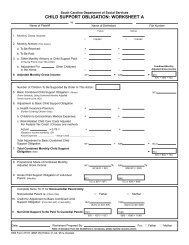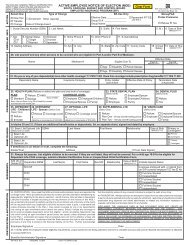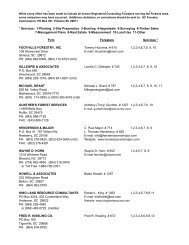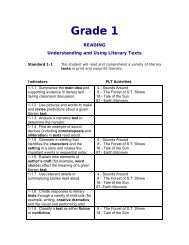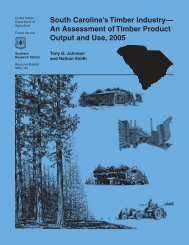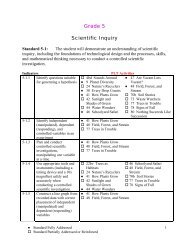2011-12 BMP Monitoring Report
2011-12 BMP Monitoring Report
2011-12 BMP Monitoring Report
You also want an ePaper? Increase the reach of your titles
YUMPU automatically turns print PDFs into web optimized ePapers that Google loves.
Harvesting <strong>BMP</strong> Compliance by Year<br />
100<br />
90<br />
84.5 84.7<br />
89.5<br />
91.5<br />
94<br />
98 98.6<br />
93.4<br />
Percent Compliance<br />
80<br />
70<br />
60<br />
50<br />
1991 1993 1994 2000 2005 2006 2009 20<strong>12</strong><br />
Percent Compliance<br />
Table 1. Harvesting <strong>BMP</strong> Compliance by year of monitoring report publication.<br />
The overall implementation rate for <strong>BMP</strong>s during harvesting operations was 92.1%,<br />
compared to the southern regional average of 92%. Most states in the south report<br />
<strong>BMP</strong> implementation rather than compliance, so this number can be compared with<br />
regional results for eleven southern states (Implementation of Forestry Best<br />
Management Practices: 20<strong>12</strong> Southern Region <strong>Report</strong>, September 20<strong>12</strong>, Southern<br />
Group of State Foresters Water Resources Committee). Implementation of <strong>BMP</strong>s in<br />
South Carolina is consistent with the region.<br />
Every category except Stream Crossings had compliance above 90% (Table 2).<br />
Stream Crossings and Streamside Management Zones have historically been the<br />
categories with lowest compliance, and continue to be the areas with greatest<br />
opportunity for improvement. Both of these categories are critical for water quality<br />
protection since they often involve use of heavy equipment and soil disturbance<br />
near water bodies.<br />
The individual practices most likely to be absent or improperly applied included<br />
retaining overstory trees in SMZs, stabilization, proper construction of stream<br />
crossings, and road entrances suitable to prevent mud on roads. All of these<br />
activities are prone to economic influence and efforts to reduce logging costs.<br />
Compliance and Implementation <strong>Monitoring</strong> <strong>2011</strong>-20<strong>12</strong><br />
Page 15


